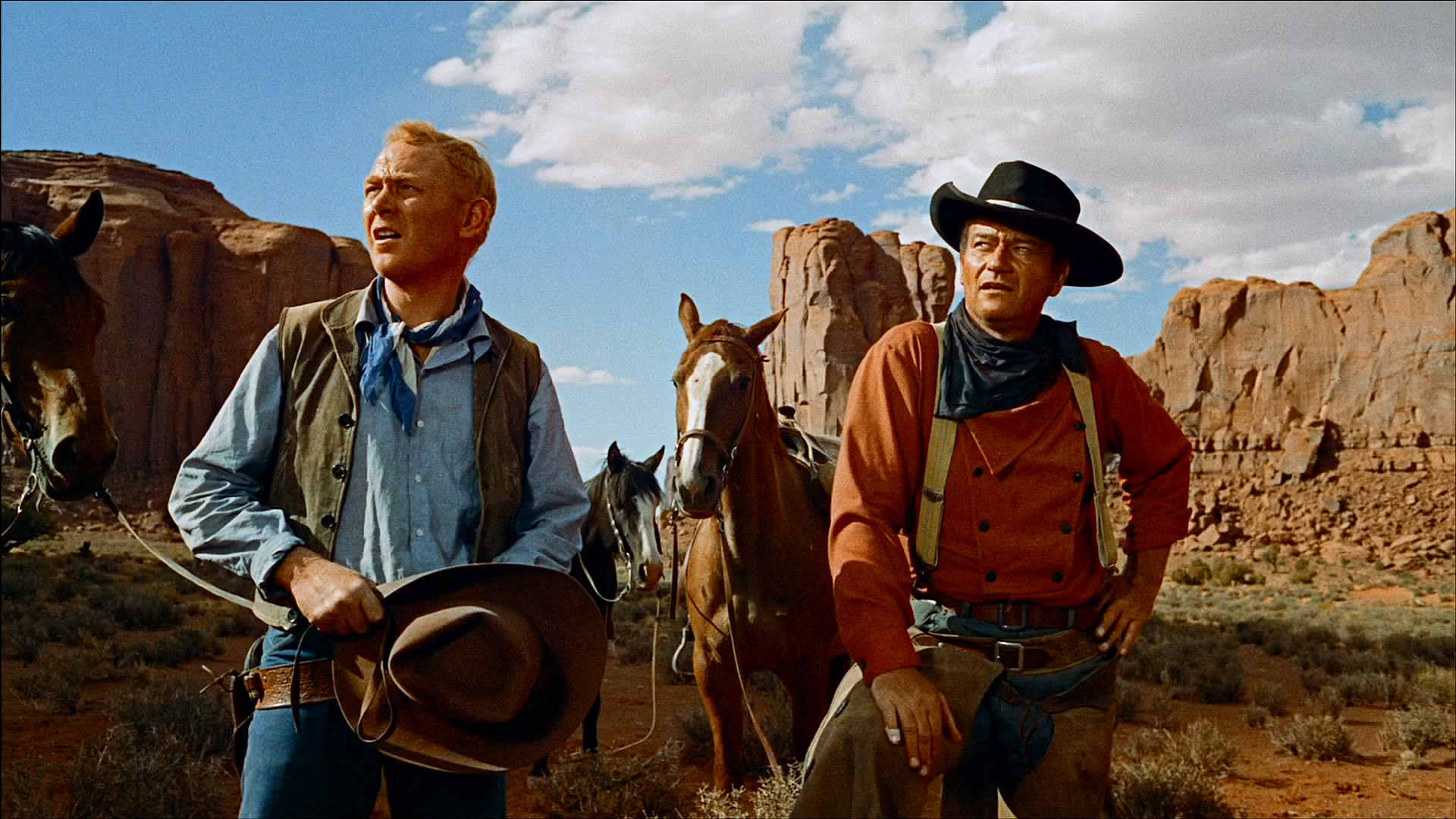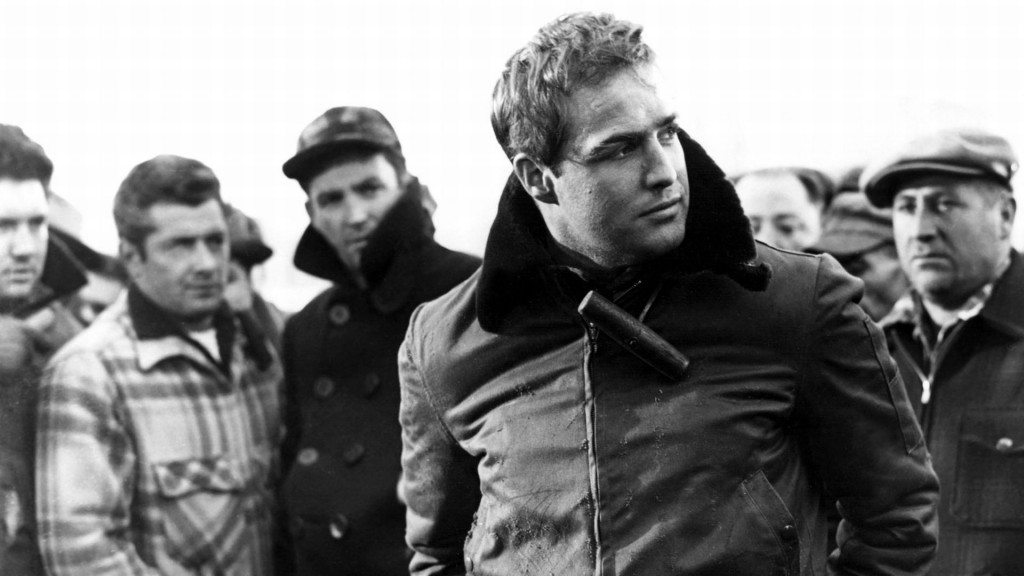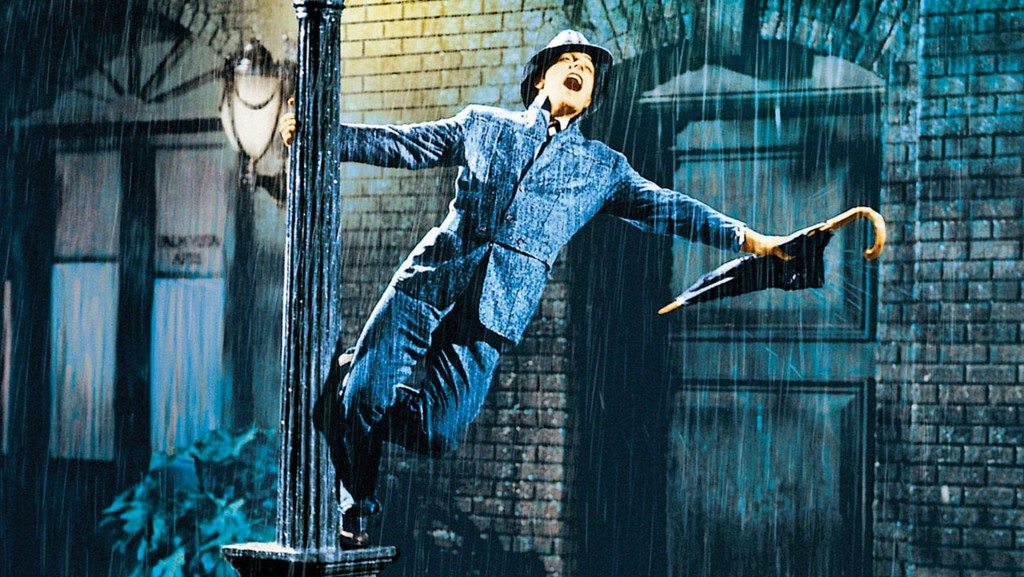With the specter of the Italian neo-realism movement still fresh in their minds, American filmmakers gave themselves over to realism and elevated the art form. Method acting was exploding in New York, dominating the stage, so it was no surprise when realism on film throughout the 1950s seemed to be everywhere. Movies could still be escapist and entertainment fare, but the important films became realistic, honest, and truthful. Kazan would become the single most important and influential of directors in the 1950s, his work stunning in its beauty and raw purity. Not only he but others were achieving greatness as well. Wilder continued to demonstrate incredible versatility, walking easily between comedy and drama, consistently challenging himself. John Ford was doing some of the best work of his career, his darkest western ‘The Searchers’ (1956), being his masterpiece; though none of his Oscars were for his westerns and the legendary Cecil B. Demille created his masterpiece, the massive life of Moses in the remake of ‘The Ten Commandments’ (1956). It was just an exceptional time to be going to the movies. Hollywood was at war with television, and though what they attempted did not always work, it was exciting to see them trying.
By now, directors were masters of their craft, and in the last roar of the great directorial lions of movies, their work in the fifties spoke for them as artists. Toiling in television were the next generation working their way towards feature films. The work they studied would be the work of the men on this list. Here is the list of top movies of the 50s.
11. Billy Wilder – Ace in the Hole (1951)

Released, then pulled from release, then sold to TV as ‘The Big Carnival’, discovered by critics in the early seventies and finally appreciated for the masterpiece it is, however dark. Humanity is seen at its worst in this film, filled with greed and self-purpose. Kirk Douglas was at his intense best as a disgraced big city newspaperman who ended up drunk and working for a small town paper because that is all he could get. He does his best with it for as long as he can, and then a story drops into his lap. A man is stuck in a cave after a cave-in, and no one yet knows, meaning he can manipulate the national media. He schemes to keep the poor soul in the cave as long as he can, knowing the fellow will die if they do not get to him fast. All around outside, a carnival atmosphere is set up as they all believe there is a chance the man will be saved. Only Douglas knows what is happening; he is only aware that this will be his ticket back to the big league of reporting. He has a sexual relationship with the man’s wife, though she sees through his act and eventually calls him out on it. No one is good in this film, except the doomed man in the cave. It is too late for Douglas to realize what he has become; it is too late for self-loathing. The film’s dark subject matter stunned audiences and critics who were clearly not ready for such repellent characters. That Wilder had the sheer courage to even make the film as he did shows his greatness, he saw life and mirrored it in his work. Rediscovered, it is a masterpiece.
10. Stanley Donen and Gene Kelly – Singin’ in the Rain (1952)
This energetic, buoyant, joyous movie explores the days of early tasking films when careers were lost because the actors could not speak. Case in point, the stunning actress we see, is gorgeous, poised, drop-dead beautiful, and then she speaks, which is akin to listening to a banshee with a dying bear. With song and dance numbers that leave us breathless to this day, Kelly and his band of actors knock it out of the park with this wildly original musical made at the height of raiding Broadway for what they had to offer. The songs, the best ones, including the title tune, display confidence from the director and his actors with their material, unlike any others at the time. Donald O’Connor is a revelation and Debbie Reynolds matches the leads every step of the way. You want to see true movie magic, watch Gene Kelly sing and dance the title song as buckets of rain pour down on him. The sheer joy of dance was never better. Possible the greatest movie musical of its day, how was this not nominated for Oscars for Best Picture and Best Director.
9. Howard Hawks – Rio Bravo (1959)

Often hailed as the perfect Hollywood Western, Hawks made the film with John Wayne in response to ‘High Noon’ (1952), which they both hated, not believing a courageous Marshall would be afraid, much less seek the help of the townsfolk he has sworn to protect. Wayne is John T. Chance, who throws a tough guy in jail, knowing the man’s men will come to break him out. With only a drunken deputy, a fresh-faced kid fast on the draw, and a wily old man to help him, they set themselves up for a fight. Dean Martin is terrific as a drunk trying to find the strength to beat the booze and stop shaking, while Walter Brennan is a delight as the old coot fast with dynamite.
Young Ricky Nelson plays the hotshot gunslinger on the right side of the law, but as with most Wayne films, this is his film. Hawks sets it all up perfectly, the pieces of the puzzle all coming together at just the right time. A big hit with audiences and critics, it is still a much loved Western. Rio Bravo became the blue print for many other films that followed.
8. Cecil B. DeMille – The Ten Commandments (1956)

Nobody filled the screen like DeMille, his crowd scenes teemed with motion and color. His cast of thousands in this film demonstrates his talent with huge scenes, while the smaller sequences allow the actors to conquer a dreadful screenplay. The film is massive and contains many magnificent moments, the hand of death moving through Egypt, the Nile turning to blood, the spectacular Exodus, and best of all, the parting of the Red Sea. Charlton Heston gives a towering performance as Moses, defying the script, the director shot Heston to make him look larger than life which was how Heston portrayed him. The location shoot was hard on DeMille, the intense heat, the endless desert, the harsh landscapes around Sinai, and took a brutal toll on the aged director. Eventually, despite warnings DeMille had a massive heart attack, only to return to the set three days later.
The vast scope of the film is often overwhelming, you just cannot believe how huge the film is. With absolute confidence, he placed his film on the shoulders of young Heston. DeMille was eighty when he made this film, his last, his finest. Though nominated for Best Picture, the old man was snubbed as Best Director, which was kind of shameful.
7. Billy Wilder – Some Like It Hot (1959)
This brilliant farce is often hailed the greatest comedy ever made, and while I do not agree, thinking ‘Tootsie’ (1982) and ‘Sideways’ (2004) have surpassed it, it is still a hugely enjoyable well, well-acted, and deeply funny film. Another example of Wilder’s remarkable versatility as a filmmaker, being able to move easily from drama to comedy, it is one reason he is considered one of the best ever. Two musicians, portrayed by Jack Lemmon and Tony Curtis, witness a mass killing, and disguised as women, join an all-girl orchestra and hit the road, knowing the mob is in hot pursuit. They encounter Sugar (Marilyn Monroe) and both fall for her, however it is Curtis she falls for, eventually discovering his secret. Lemmon is romanced by an obscenely wealthy man, who when told his true love is a man, reacts “nobody’s perfect”. Very funny, with a lovely, luminous performance from Monroe and two superb performances from Curtis and Lemmon. If anyone doubts that Monroe had talent, watch this and see how the camera loved her and she loved it.
She was sex incarnate on the screen. Joe E. Brown is droll and perfect as the rich man who does not care if his love is a man…he is in love. The film challenged the ratings board with its gentle suggestion of homosexuality and was partly responsible for its demise. Superbly directed and written.
6. George Stevens – Shane (1953)
Early in his career, Stevens was the go to director for light comedies and song and dance films, he possessed that special touch. But upon returning from the war, where he documented the first images of the Nazi concentration camps, he would never again direct a light film, it was no longer in him. He had been forever altered by what he had experienced and it was reflected in his work. His greatest film, ‘Shane’, was a Western that was both realistic and mythical, beautifully told through the language of cinema and a literate, thoughtful script. When land barons, thoroughly corrupt, try to push farmers off their claim, a lonely gunfighter passing through befriends the Starret family and the farmers. Escaping his past, Shane descends into the valley from the mountains, and will defend them, kill the vicious, cold blooded gunfighter hired to kill the farmers, and befriends Joey (Brandon De Wilde), the ten year son of the Starrets. Mortally wounded, he heads into the mountains to die, knowing the way of the gunfighter is gone, the West was changing.
Alan Ladd was superb as Shane, Jean Arthur his equal as Mrs. Starret, and Van Heflin the pillar of goodness as Starret. Jack Palance is oily evil as Wilson, a gunslinger Shane knows all too well. Stevens allows the massive and magnificent landscape to dwarf the characters, a tree stump is metaphorical for their taming of the harsh land. Easily among the finest Westerns ever made. DeWilde is unforgettable.
5. William Wyler – Ben Hur (1959)
Incredibly, Wyler worked on the original silent Ben Hur (1927) as an assistant and second unit director, never knowing thirty four years later he would be invited to helm the remake. The perfect choice because he brought intelligence to the story, yes it would be a massive epic set in Biblical times, but it would be driven by a narrative, the moments of subtle power, character-driven in every way. And that is what he did, giving audiences a very intimate, personal story of a Jewish prince wrongly accused, sentenced to life in the galleys aboard a Roman warship, but after saving a wealthy and powerful general he becomes a citizen of a Rome. Given the chance for revenge against his nemesis in the great chariot race, Ben Hur (Charlton Heston) does indeed get his revenge, but there is much more to come.
Wyler made a masterpiece no question, the centerpiece of the film being the chariot race, the greatest action sequence ever made. But it is the quiet moments of subtle power that show Wyler’s greatness. Watch Heston the first time he encounters Christ, watch the face of the Roman about to strike Jesus, Ben Hur’s reaction to his mother, in the valley of the lepers asking if he is well. Brilliant all. The film won Wyler his third Oscar for Best Director, and a record eleven Academy Awards. Still a knockout.
4. Elia Kazan – A Streetcar Named Desire (1951)
The difficulty in bringing this to the screen was toning down the sex, the heat, a rape, and the fact that Blanche is a nymphomaniac with an appetite for very young, pretty men. Yet with careful choices, camera angle choices and the reactions of the characters, Kazan pulled it off. We understood the hot sexual connection between Stanley and Stella, that he ravaged her and left her blissfully orgasmic. We know Stanley rapes Blanche just by what he does with his camera, and the fact that Blanche is a nymphomaniac is gently suggested. Kazan opened the play up only a little, choosing to keep it close and claustrophobic.
Brando is of course raw and visceral as Stanley, the brutish husband to Stella, who he adores and she him. Watch his initial scene with her and you see he meant no harm, he was prepared to like her, but could not stand the putting on airs, the pretense. Vivian Leigh is heartbreaking as the mentally unbalanced woman who attempts to come between man and wife and will pay a terrible price. Fragile, broken, shattered, Leigh was astonishing, winning her second Oscar. Acted with stunning power by Brando, Vivian Leigh, Karl Malden and Kim Hunter, it was easily the best film of its year, and Kazan worked miracles. Ironically the entire cast, except Brando won Oscars…make sense to you?
3. Billy Wilder – Sunset Boulevard (1950)

One of his darkest, strangest film that has brought the leading lady to iconic status. Norma Desmond instantly conjures an image of a dangerously unbalanced movie star living in the past, having deluded herself into thinking audiences want to see her again. A star in the silent era, like so many others, Norma did not make the transition to sound and has been isolated in her mansion, watching her old movies with her ex-husband as her butler, waiting on her hand and foot. When a young writer attempts to hide his car on her property, she seduces him into writing her comeback and eventually into her bed. Wilder shot the film like a Gothic horror film, with Norma as the monster.
Silent screen star Gloria Swanson is magnificent as Norma, her wide eyed, scheming character always on, as though her entire were a film. She moves through her quiet, eerie mansion, a temple to herself like a silent screen star, overdoing her movements ever so slightly, as though she were acting her life as an expressionistic film. In many sequences, it as though she were embalmed already, but in other the madness burns through and we cannot take our eyes off her face. Indeed, they had faces then. It is one of the screen’s greatest performances. This might be Wilder’s greatest film.
2. John Ford – The Searchers (1956)

The screen is black until a door opens to show the the stunning majesty and colors of the landscape, the mountains, the rugged terrain. It will close at the end of the film, leaving one character outside in that harsh wilderness, where he knows he belongs, unable to ever be part of society, the screen goes black shutting him out and away from the others. Ford’s masterpiece contains the finest performance ever given by John Wayne, sublime here as Ethan Edwards, a man with a raging spirit, a racist, a killing machine who refused to stop fighting after the war.
He comes home to his brother’s farm, but when lured away, Indians go on a murderous raid and slaughter the family, taking the two young daughters with them to be raised as Indian brides. Ethan goes on a search, on a quest for years before it becomes evident that he intends to kill his surviving niece rather than take her home. But when face to face with her, he finds his humanity and cannot kill his family. Wayne gives a towering performance seething with anger and hate, unlike he had ever done before. The landscape is captured in all its rugged magnificence but Ford keeps the story intimate, and astonishing. For this, he deserved an Oscar. When they list the greatest Westerns ever made, this one tops the list.
1. Elia Kazan – On the Waterfront (1954)

If there was genuine purity in the performances of his actors, it was Kazan’s immense gift that he captured that perfection on film. No other director exemplifies the movement in realism in film than Kazan, who being a former documentarian understood the value of the truth onscreen. He took his cameras to the docks in New Jersey and New York to shoot his masterpiece ‘On the Waterfront’ (1954), which many felt was Kazan justifying what he did in testifying before the House Un-American Activities Committee, where Kazan named names. Marlon Brando gave one of the greatest performances of all time as a former boxer now working cushy jobs in exchange for information. The gritty docks give the film an edgy realism, but this film belongs to the actors.
The famous scene in the back of a taxi cab between Brando and Steiger is now iconic, as the young brother realizes it has always been his brother betraying him, not protecting him. Brando’s moments with Eva Marie Saint are gentle and magical, as they do a careful dance falling in love with one another despite the horrible truth Terry harbors. As a dedicated Irish priest, furious at the murders happening on the docks, Karl Malden is brilliant, forceful and imbued with the wrath of God. The cast is superb, from Brando working magic, through Rod Steiger, Karl Malden, Lee J. Cobb and Eva Marie Saint, all superb. Directed with a purity that is genius, one of the greatest American films ever made, it won a multitude of Academy Awards.
Read More: Best Movies of the 2010s


You must be logged in to post a comment.